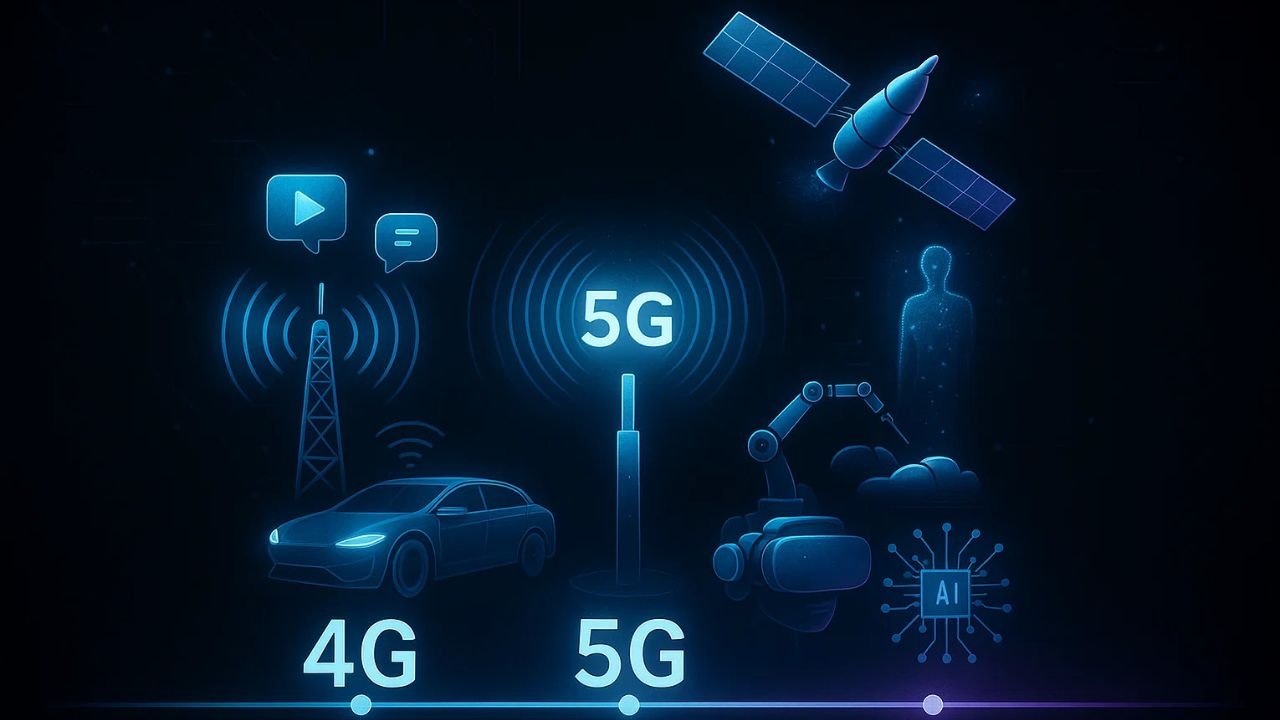In our fast-paced, digitally connected world, it’s easy to overlook the incredible progress we’ve made over the past few decades. From sending simple text messages to streaming ultra-HD content on the go, the journey of mobile networks has transformed the way we live, work, and communicate. This article explores the evolution from 4G to 5G, the technologies that powered this leap, the challenges involved, and what’s waiting for us beyond the horizon—6G and next-gen networks.
1. Introduction: A Brief History of Mobile Networks
Mobile connectivity has gone through several major leaps, each generation improving on the last:
- 1G (1980s): Analog voice calls with huge phones and poor clarity.
- 2G (1990s): Brought text messaging (SMS), improved call quality, and enhanced digital security.
- 3G (2000s): Mobile internet became a reality. Web browsing, emails, video calls.
- 4G (2010s): The game-changer. High-speed internet enabled streaming, real-time gaming, and mobile apps.
Each generation didn’t just offer faster internet—it redefined global communication and opened doors to new industries and opportunities.
2. What Made 4G Revolutionary?
4G, particularly LTE (Long Term Evolution), signaled the true start of the mobile internet era. With speeds ranging from 10 to 100 Mbps, it allowed users to:
- Watch Netflix or YouTube on the go
- Play mobile games with real-time responsiveness
- Use ride-sharing apps like Uber and Bolt
- Connect multiple devices via hotspots
More than just speed, 4G offered low latency, improved coverage, and better spectrum efficiency. It also became the backbone of many online industries such as streaming platforms, mobile-first eCommerce, and social media.
3. The Rise of 5G: Speed, Power, and Possibilities
Launched in the late 2010s and rolling out globally into the 2020s, 5G isn’t just faster—it’s smarter.
Key Technologies Behind 5G
- mmWave (Millimeter Wave): Delivers lightning-fast speeds but requires more antennas.
- Massive MIMO (Multiple-Input, Multiple-Output): Allows many devices to connect simultaneously.
- Network Slicing: Dedicated virtual networks for specific industries (e.g., healthcare, factories).
What 5G Brings to the Table
- Speeds up to 10 Gbps (100x faster than 4G)
- Latency has been reduced to just 1 millisecond, making it ideal for applications like gaming and robotics.
- Connection Density: Supports up to 1 million devices per square kilometer
Industries Transformed by 5G
- Smart Cities: Real-time traffic monitoring, waste management, surveillance
- Healthcare: Remote surgeries and diagnostics using robotics
- Autonomous Vehicles: Cars that talk to each other and the road
- Industry 4.0: Automation, real-time monitoring in factories
5G is more than just mobile internet—it’s the infrastructure for a connected future.
4. Challenges Faced During 5G Deployment
As powerful as 5G is, its global rollout hasn’t been smooth. Some of the key hurdles include:
️ Infrastructure Demands
- Due to its short-range signals, 5G relies on a dense network of small cells and base stations to ensure consistent coverage
- Urban areas are prioritized, leaving rural regions behind
Public Concerns & Misinformation
- Myths around health effects (debunked by scientific studies)
- Conspiracy theories slowed down acceptance in some countries
Uneven Global Adoption
- Countries like South Korea, China, and the US are leading
- Developing nations face delays due to cost, logistics, and spectrum availability
Despite this, 5G is steadily becoming the global standard—powering economies and innovations alike.
5. What’s Next After 5G? (6G and Beyond)
Yes, discussions about 6G are already underway—and it’s no longer just science fiction While it’s still in research and development, here’s what experts are predicting for the 2030s and beyond:
What Might 6G Look Like?
- Speeds: 100x faster than 5G (up to 1 Tbps!)
- Frequency Range: Terahertz (THz) bands
- Zero-Latency communication (ideal for brain-computer interfaces)
- AI-Native Networks: Self-optimizing and self-healing infrastructure
- Holographic Communications: Real-time 3D video calls and AR/VR integration
Potential Use Cases
- Immersive VR/AR: True virtual presence in meetings and classrooms
- Remote Brain Surgery: Performed by robotic arms controlled continents away
- Space Internet: Networks covering the Earth and beyond
Countries like China, the U.S., Japan, and South Korea are already investing billions in 6G research. It’s not a matter of if — but when.
6. Conclusion: The Network That Shapes the Future
From the dial-up sounds of early mobile to the blazing speeds of 5G, our journey through mobile networks has been nothing short of revolutionary. These technologies aren’t just about faster streaming—they’ve changed the world economy, health systems, defense sectors, and human interaction.
As we move toward 6G and beyond, the challenge will be ensuring equity, security, and sustainability in a hyper-connected world. One thing is certain: The future of mobile networks will continue to mirror the evolution of our global society.
Want more like this? Stay connected with Global Mirror Official for tech, war, history, and global insights that matter.
Got feedback? Email us at globalmirrorofficial.com@gmail.com
